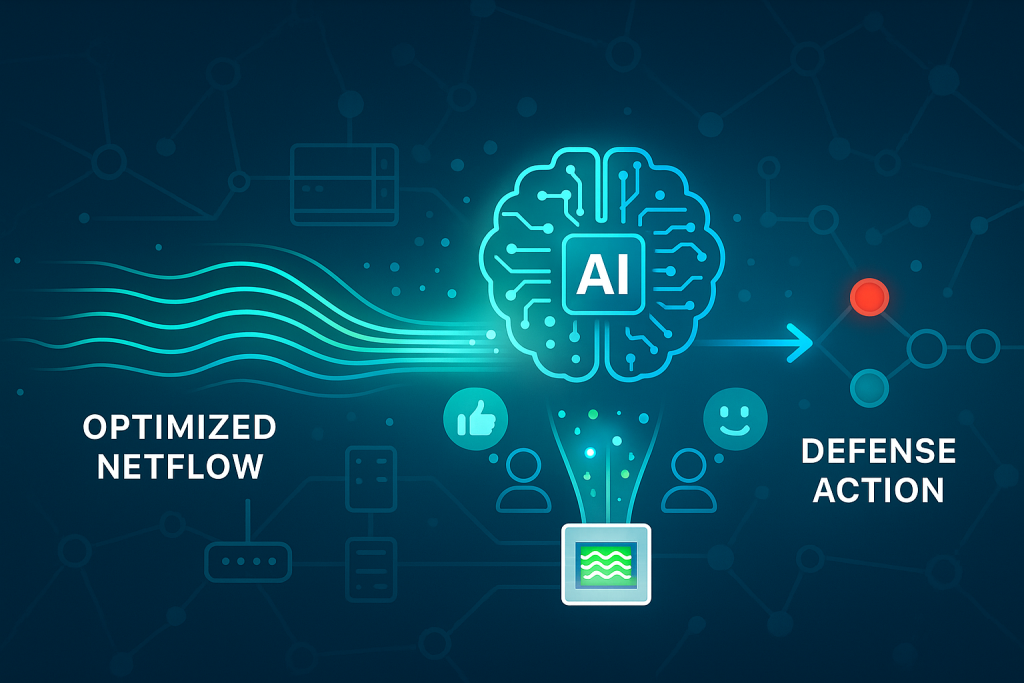In the relentless battle against sophisticated cyber threats, security teams are transitioning from static, perimeter-based defenses to dynamic, proactive strategies. One of the most promising is Automated Moving Target Defense (AMTD). AMTD systems don’t just wait for an attack; they proactively change the attack surface—shifting IP addresses, randomizing network configurations, or deploying deceptive decoys—to make it virtually impossible for attackers to establish a foothold or reliably map the network.

AMTD represents the cutting edge of defense, focusing on prevention by increasing attacker friction. However, any automated defense is only as smart as the data it trained on. This is where a critical challenge emerges: AMTD technologies rely heavily on real-time Artificial Intelligence (AI) and Machine Learning (ML) to monitor the environment and determine when and how to shift the target.
The problem? They are often crippled by two factors: data volume and lack of context in the raw security telemetry, including NetFlow. This is the gap that NetFlow Optimizer (NFO) is specifically designed to bridge.
NFO acts as the essential pre-processor, providing the clean, contextual data needed to train AMTD’s ML models, moving the defense from mere automation to true autonomy.
NFO: The High-Performance Pre-Processor for AMTD Intelligence
NFO complements AMTD products by acting as a high-performance data pre-processor and enrichment engine. While AMTD is focused on the proactive defense action, NFO provides the high-quality intelligence required for the AMTD system (or the SIEM/SOAR platform managing the AMTD system) to make its defensive decisions instantly and accurately.
Here is a breakdown of how NFO ensures AMTD systems operate at peak efficiency:
1. Fueling AMTD’s AI/ML Models with Actionable Data
AMTD’s predictive power is entirely dependent on its AI/ML models accurately reading the network environment. Raw NetFlow data—massive, noisy, and context-poor—is terrible fuel. NFO fixes this:
- Volume Reduction: Raw NetFlow data is simply too massive for efficient real-time analysis, overwhelming high-speed AI engines. NFO’s intelligent deduplication and aggregation can reduce flow volume by 80% or more. This ensures the AMTD system’s AI is fed a lean, manageable stream of traffic summaries, not a deluge of redundant records.
- Enrichment: Raw NetFlow (IP address and port) lacks the necessary context for autonomous learning and predictive modeling. NFO enriches this data in real-time with critical security and identity information, turning a generic flow into actionable intelligence:
- User Identity: Correlating flows with usernames (e.g., from Active Directory/LDAP).
- GeoIP and Reputation: Identifying communications to or from known malicious IP addresses or unexpected geographic locations.
- Application Names: Identifying the specific application responsible for the traffic.

2. Enabling Autonomy and Predictive Defense
AMTD is fundamentally a system of autonomy. Its strength is in continuously learning the environment’s baseline and proactively shifting when that baseline is compromised. NFO’s enriched data is critical for this teaching process.
- Teaching the Baseline for Autonomy: AMTD’s ML models must first learn what normal looks like within the constantly changing, AMTD-controlled environment. NFO provides the high-fidelity training data—enriched with user, application, and device context—that allows the ML models to establish a precise and continuously updated baseline of expected behavior. This is the foundation of autonomy.
- Informing the Proactive Shift: When an AMTD system needs to execute a defensive shift (e.g., changing an IP address or isolating a host), it needs a high-confidence reason. NFO provides the contextual evidence that informs the AMTD’s decision-making engine:
- Contextual Evidence: Instead of relying on a generic traffic alert, the AMTD system receives intelligence such as: “User X is attempting to scan Server Y via an unexpected port,” or “Application Z is initiating an unusual outbound connection.” This rich context moves the AMTD from “something is happening” to a confident, autonomous decision: “This is a threat; shift the target now.”
- Strengthening AMTD’s Core Function: NFO’s high-quality data significantly improves the AMTD system’s ability to identify early stages of reconnaissance and lateral movement, which are the exact phases AMTD is designed to disrupt. By reducing noise and adding context, NFO ensures the signal is not buried, allowing the AMTD platform to autonomously interpret the network’s state and act without human intervention.
Conclusion: Data Quality for Defensive Agility
Automated Moving Target Defense offers a powerful leap in proactive security. However, its effectiveness hinges on the speed and quality of its data intake.
NetFlow Optimizer ensures that the security analysis tools feeding or guiding the AMTD system are not overloaded and have the rich, real-time context needed to make quick, informed decisions about how to proactively defend the network.
NFO delivers the clean, enriched traffic intelligence necessary to maintain defensive agility, allowing AMTD to execute its mandate autonomously and without hesitation or error.
Contact us today to learn more about how NFO helps automate security operations.
You can also schedule a demo to see how our NetFlow Optimizer feeds your security systems the high-fidelity data they need.
